 |
by staff on (#2T7FY)
Over the last two years, E4 Computer Engineering and QCT have worked in close collaboration to supply CERN with thousands of server systems, cores and Petabytes of storage. "E4 has successfully supplied us with reliable and performant servers of the QCT brand over the last couple of years,†said Olof Bärring, Deputy Head of the computing facilities group, IT department, CERN. “The systems have proved to be suitable for different purposes ranging from High Throughput Computing (HTC) number crunching of physics data coming from LHC experiments to High Performance Computing (HPC) clusters for the CERN theory group. We are also very pleased with the reliable deliveries, the warranty support provided.â€The post E4 Engineering Powers CERN with Quanta Cloud Technology appeared first on insideHPC.
|
 Inside HPC & AI News | High-Performance Computing & Artificial Intelligence
Inside HPC & AI News | High-Performance Computing & Artificial Intelligence
| Link | https://insidehpc.com/ |
| Feed | http://insidehpc.com/feed/ |
| Updated | 2025-12-16 08:45 |
 |
by staff on (#2T6ZQ)
In this special guest feature, Kim McMahon checks in from Frankfurt to give us a preview of ISC 2017. There is much in store this week, so be sure not to miss a beat!The post 10 Things Not to Miss at ISC 2017 in Frankfurt appeared first on insideHPC.
|
 |
by Rich Brueckner on (#2T55D)
The recently published Department of Energy FY 2018 Congressional Budget Request has raised a lot of questions about the Aurora supercomputer that was scheduled to be deployed at Argonne ALCF next year. "As we covered in our Radio Free HPC podcast, Aurora appears to be morphing into a very different kind of machine."The post Is Aurora Morphing into an Exascale AI Supercomputer? appeared first on insideHPC.
|
 |
by Rich Brueckner on (#2T52E)
"In this presentation, Andy Rudoff from Intel reports on the latest developments around persistent memory programming. He’ll describing current discussions in the SNIA NVM Programming Technical Work Group, the current state of operating system support, recent tool and library development, and finally he’ll describe some of the upcoming challenges for high performance persistent memory use."The post Persistent Memory Programming: The Current State of the Ecosystem appeared first on insideHPC.
|
 |
by staff on (#2T4ZF)
Today Allinea software, now part of ARM, announced plans to preview the latest update to its powerful tool suite for developing and optimizing high performance and scientific applications at ISC17 in Frankfurt. "Eliminating performance loss across systems and minimizing the communication overhead often make a critical difference in improving application run times in HPC. We believe that our extended cross-platform support will enable users to achieve unprecedented results by running their systems more efficiently on each of the major platforms and even across platforms,†said Mark O’Connor, director of product management, server and HPC tools, ARM.The post Allinea to Showcase V7.1 Performance Tools at ISC 2017 appeared first on insideHPC.
|
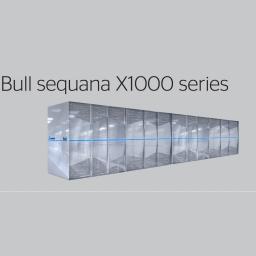 |
by staff on (#2T4T1)
Today Atos announced that the company has won a contract with GENCI to deliver one of the most powerful supercomputers in the world, planned for the end of 2017. A successor of the Curie system installed at the TGCC, the Bull Sequana supercomputer will have an overall power of 9 petaflops for research purposes in France and Europe.The post Atos to Build 9 Petaflop Supercomputer for GENCI appeared first on insideHPC.
|
 |
by Rich Brueckner on (#2T4T3)
Today NEC Corporation announced that the Czech Hydrometeorological Institute (CHMI) will soon deploy an NEC LX series supercomputer for weather forecasting. "We are very happy that CHMI has selected NEC to deliver an HPC solution for their weather and climate simulations, as NEC has a very special expertise in meteorological applications. For years, we have been successfully collaborating with meteorological institutes, and we look forward to cultivating these partnerships further," said Andreas Gottlicher, Senior Sales Manager, NEC Deutschland.The post NEC LX Supercomputer coming to Czech Hydrometeorological Institute appeared first on insideHPC.
|
 |
by staff on (#2T4K3)
Today Fujitsu announced an order from the Research Institute for Information Technology at Kyushu University for a new supercomputer system for deployment in October 2017. "This system will consist of over 2,000 servers, including the Fujitsu Server PRIMERGY CX400, the next-generation model of Fujitsu's x86 server. It is expected to offer top-class performance in Japan, providing a theoretical peak performance of about 10 petaflops. This will also be Japan's first supercomputer system featuring a large-scale private cloud environment constructed on a front-end sub system, linked with a computational server of a back-end sub system through a high-speed file system."The post Kyushu University Orders Fujitsu Supercomputer appeared first on insideHPC.
|
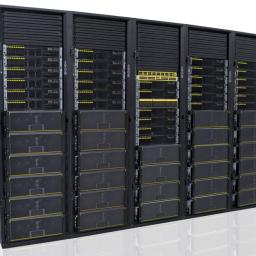 |
by staff on (#2T4HB)
Today Penguin Computing announced FrostByte with ThinkParQ BeeGFS, the latest member of the family of software-defined storage solutions. FrostByte is Penguin Computing’s scalable storage solution for HPC clusters, high-performance enterprise applications and data intensive analytics. "We are pleased to announce our Gold Partner relationship with ThinkParQ," said Tom Coull, President and CEO, Penguin Computing. "Together, Penguin Computing and ThinkParQ can deliver a fully supported, scalable storage solution based on BeeGFS, engineered for optimal performance and reliability with best-in-class hardware and expert services."The post Penguin Computing FrostByte adds BeeGFS Storage appeared first on insideHPC.
|
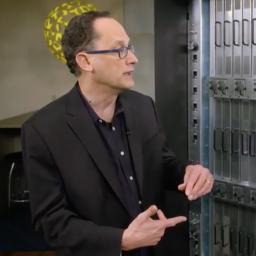 |
by staff on (#2T43X)
Today Hewlett Packard Enterprise announced it has been awarded a research grant from the DoE to develop a reference design for an exascale supercomputer. “Our novel Memory-Driven Computing architecture combined with our deep expertise in HPC and robust partner ecosystem uniquely positions HPE to develop the first U.S. exascale supercomputer and deliver against the PathForward program’s goals.â€The post Video: DoE Taps HPE Memory-Driven Computing for Exascale appeared first on insideHPC.
|
 |
by Rich Brueckner on (#2T2QE)
Today U.S. Secretary of Energy Rick Perry announced that six leading U.S. technology companies will receive funding from the Department of Energy’s Exascale Computing Project (ECP) as part of its new PathForward program, accelerating the research necessary to deploy the nation’s first exascale supercomputers. "Continued U.S. leadership in high performance computing is essential to our security, prosperity, and economic competitiveness as a nation,†said Secretary Perry. “These awards will enable leading U.S. technology firms to marshal their formidable skills, expertise, and resources in the global race for the next stage in supercomputing—exascale-capable systems.â€The post Podcast: DoE Awards $258 Million for Exascale to U.S. HPC Vendors appeared first on insideHPC.
|
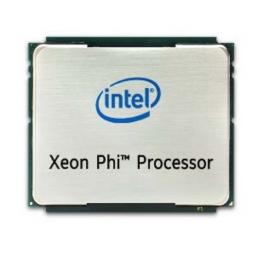 |
by MichaelS on (#2T24N)
"With the Intel compilers, intrinsics are recognized and the instructions are generated in-line which is a tremendous advantage. Since the Intel Xeon Phi processor when using the AVX-512 intrinsics can perform a tremendous number of floating point operations per second, it is beneficial to use intrinsics for certain math computations. To use intrinsics, all that is needed is the proper header file and then to call the desired intrinsic function."The post Vectorization with AVX-512 Intrinsics appeared first on insideHPC.
|
 |
by MichaelS on (#2T21F)
This is the third entry in an insideHPC series that explores the HPC transition to the cloud, and what your business needs to know about this evolution. This series, compiled in a complete Guide, covers cloud computing for HPC, considerations for applications to transition to the cloud, IaaS components, OpenStack fundamentals and more.The post Considerations for Applications to Transition to a Cloud appeared first on insideHPC.
|
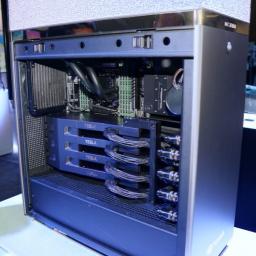 |
by staff on (#2T1TQ)
Today Exxact Corporation announced that it will offer the new NVIDIA DGX Station and DGX-1 systems featuring the NVIDIA Tesla V100 data center GPUs based on the NVIDIA Volta architecture. "NVIDIA’s DGX portfolio is paving the way for a new era of computing,†said Jason Chen, Vice President of Exxact Corporation. “The performance of the new DGX Station and DGX-1 systems for AI and advanced analytics is unmatched, providing data scientists a complete hardware and software package for compute-intensive AI exploration.â€The post Exxact Corporation offers NVIDIA DGX Station and DGX-1 for Deep Learning appeared first on insideHPC.
|
 |
by staff on (#2T1DX)
"We are pleased to offer this new integration to our customers and we are confident that the solution will be very popular with our user base," said Martijn de Vries, CTO at Bright Computing. "Cloud bursting from an on-premises cluster to Microsoft Azure offers companies an efficient, cost-effective, secure and flexible way to add additional resources to their HPC infrastructure. Bright's integration with Azure also gives our clients the ability to build an entire off-premises cluster for compute-intensive workloads in the Azure cloud platform.â€The post Bright Computing Adds Cloud Bursting Support for Microsoft Azure appeared first on insideHPC.
|
by Rich Brueckner on (#2SYKD)
In this video, Jérémie Bourdoncle from Altair describes the company's innovative PBSCloud.io, which is a new SAS platform to for deploying HPC Appliances in Public and Private Clouds. "PBScloud.io is a cloud platform that lets you easily create, manage, deploy, and monitor HPC appliances for public clouds, private clouds, and bare metal."The post PBSCloud.io – A new SaaS platform for Deploying HPC Appliances in the Cloud appeared first on insideHPC.
 |
by Rich Brueckner on (#2SYFQ)
"Today DDN announced a series of performance and reliability innovations across its storage appliances, aimed at meeting the growing demand for storage performance, simplicity and reliability at scale in a new era of data-centric computing. Infinite Memory Engine (IME) and Storage Fusion Architecture (SFA) product lines now feature significant new data protection and performance improvements that allow DDN customers to deploy a complete suite of storage services across even the most demanding emerging IoT, deep learning and technical HPC environments."The post DDN Storage Innovations Enhance Performance and Reliability at Scale appeared first on insideHPC.
|
 |
by Rich Brueckner on (#2SY98)
"The Micro DC is a compact data center that can be easily deployed in any environment while managing an incredible amount of power and performance,†said Joerg Desler, President of STULZ USA. “It’s modular system is configured to use various combinations of liquid and air cooling allowing the system to grow with the customer’s needs. Integrating STULZ technology with CoolIT Systems Rack DCLC has resulted in ultra-efficient total thermal solutions that can support any OEM server at even the highest density configurations.â€The post STULZ and CoolIT Systems Launch Liquid Cooled Micro Data Center for HPC appeared first on insideHPC.
|
 |
by dangutierrez2 on (#2SY5F)
Artificial intelligence (AI) and machine learning — decades-old technologies that are now electrifying the computing industry — for all intents and purposes, seem to be in the process of transforming corporate America. This article is part of a special insideHPC report that explores trends in machine learning and deep learning.The post Riding the Wave of Machine Learning and Deep Learning appeared first on insideHPC.
|
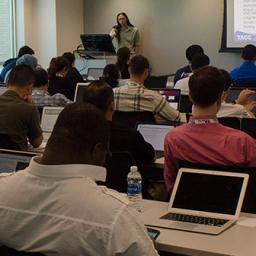 |
by Rich Brueckner on (#2SVJM)
Today the TACC announced that the first High Performance Computing for Managers Institute will take place September 12-14 in Austin. "With course materials by TACC and the Numerical Algorithms Group, this three-day workshop is specifically tailored to managers and decision makers who are using, or considering using, HPC within their organizations. It is also applicable to those with a real opportunity to make this career step in the future."The post TACC to Hosts HPC for Managers Institute in Austin appeared first on insideHPC.
|
 |
by staff on (#2SV1Q)
Today the Energy Department announced up to $3 million in available support for manufacturers to use supercomputers at the department's national laboratories to tackle major manufacturing challenges. The High Performance Computing for Manufacturing (HPC4Mfg) Program enables the use of high performance computing (HPC) expertise and resources for the manufacturing sector to address research and development challenges with HPC and investigate its use to support advanced energy and manufacturing issues. "The technologies adopted as a result of the HPC4Mfg Program can have a significant impact with potential to close the knowledge gaps in the manufacturing and energy industry," said Mark Johnson, director of the Advanced Manufacturing Office. "This program aligns well with the technical focus areas our office is pursuing in early-stage, applied research and development."The post Call for Proposals: HPC4Mfg Program has $3 Million to Boost Supercomputing in Industry appeared first on insideHPC.
|
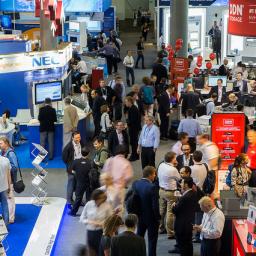 |
by Rich Brueckner on (#2STZE)
In this Radio Free HPC podcast, Rich gives us a day-by-day preview of the upcoming ISC 2017 conference. The event takes place June 18-22 in Frankfurt, Germany. "ISC High Performance focuses on HPC technological development and its application in scientific fields, as well as its adoption in commercial environments. In 2017 we offer you 13 fascinating HPC topics grouped under three categories: systems, applications, and emerging topics. All topics will be addressed in different power-packed sessions. The ISC tutorials, workshops and the exhibition will complement these sessions."The post Radio Free HPC Does the Day-by-Day Preview of ISC 2017 appeared first on insideHPC.
|
 |
by Rich Brueckner on (#2STET)
In this video from the Dell EMC HPC Community meeting, Steve Stein from Intel describes the company's powerful processing solutions for Machine Learning. "With Intel technology, artificial intelligence helps businesses accelerate solutions, automate operations, and gather better insights to make smarter decisions."The post Intel Moves Forward with Machine Learning with Dell EMC appeared first on insideHPC.
|
 |
by staff on (#2STAS)
Cloud computing providers are now allowing users to rent GPU power in the cloud for big data analytics instead of building or buying their own hardware. In this week’s Sponsored Post, Katie Rivera, of One Stop Systems, explains the technology behind analytics for massive datasets using high density GPU accelerators.The post Analytics for Massive Datasets Using High Density GPU Accelerators appeared first on insideHPC.
|
 |
by Rich Brueckner on (#2SPDC)
In this slidecast, Scott Misage from Intel is our guest on the Rich Report. As the General Manager of the Intel Omni-Path Business Unit, Scott has a lot to say about scalability, performance, and market momentum for this powerful interconnect technology. He also provides a preview of ISC 2017, where Intel Omni-Path will be in the spotlight as a rising star on the TOP500.The post Slidecast: Intel Omni-Path Architecture – A World Class High Performance Interconnect appeared first on insideHPC.
|
 |
by Rich Brueckner on (#2SPND)
Bruce Burns from Oracle presented this talk at the PBS Works User Group. "In this session you learn how to use PBS Professional with Oracle BMCS for common customer use case scenarios to dynamically scale out, on demand and leverage the price / performance advantages that Oracle BMCS uniquely provides with PBS Works."The post Using Oracle Bare Metal Cloud Services with PBS Professional appeared first on insideHPC.
|
 |
by Rich Brueckner on (#2SPK7)
ISC 2017 and WHPC will once again host the Women in HPC Workshop on June 22 in Frankfurt, Germany. "Entitled Diversifying the HPC Community, this workshop aims to provide leaders, managers, and individual contributors in the HPC community with methods to improve diversity while providing early career women an opportunity to develop their professional skills."The post Women in HPC Workshop Returns to ISC 2017 appeared first on insideHPC.
|
 |
by staff on (#2SP83)
To help customers discover a new compute experience marked by enhanced agility, security, and control, HPE will host its High Performance Consortium for Advanced Scientific and Technical (HP-CAST) computing users group event in Frankfurt, Germany from June 16th-17th. HPE's Bill Mannel covers highlights from the upcoming conference.The post Discover a New Compute Experience at HP-CAST 28 appeared first on insideHPC.
|
 |
by staff on (#2SP84)
The Intel Omni-Path Architecture is the next-generation fabric for high-performance computing. In this feature, we will explore Intel's end-to-end fabric solution designed for HPC and Enterprise. "Intel Omni-Path Architecture immerses Intel in an entire fabric architecture for HPC, rather than just a single component."The post Intel Omni-Path Architecture: End-to-End Fabric Solution Designed for HPC and Enterprise appeared first on insideHPC.
|
 |
by Rich Brueckner on (#2SK70)
In this video from the Dell EMC HPC Community meeting, Hugo Falter from Par-Tec describes the company's software contribution to the 5 Petaflop booster Dell EMC supercomputer coming the Julich Supercomputing Center. "ParaStation MPI software from ParTec will be used to keep the new Booster system running efficiently. The resiliency-related extensions of ParaStation MPI support fine-grained recovery of parallel application tasks."The post How Par-Tec Software will Power the 5 Petaflop Dell EMC Booster Supercomputer coming to Jülich appeared first on insideHPC.
|
 |
by Rich Brueckner on (#2SK47)
HGST in San Jose is seeking an HPC Engineer in our Job of the Week. "Western Digital’s High Performance Computing and Cloud Computing environments are key to bringing new storage solutions to market. As a Sr. Sys Admin in the High Performance Computing and Cloud Computing Infrastructure team, you will be at the heart of Western Digital’s engineering and product development process, delivering the HPC and Cloud Computing infrastructure that empowers engineering teams to develop new storage technologies and deliver high quality products to market quickly."The post Job of the Week: HPC Engineer at HGST appeared first on insideHPC.
|
 |
by Rich Brueckner on (#2SGJ0)
In this video from the Dell EMC HPC Community meeting, Joseph George describes the latest trends in the datacenter that are reshaping high performance computing. "Joseph George is the former Vice President of Solutions at SUSE responsible for building and driving the new solutions organization at SUSE, specifically focused on tackling specific customer challenges with engineered solutions by leveraging OpenStack, Ceph, Linux, and more."The post Joseph George on Datacenter Trends that are Reshaping HPC appeared first on insideHPC.
|
 |
by staff on (#2SGBH)
Today the Swiss Graduate Program “Foundations in Mathematics and Informatics for Computer Simulations in Science and Engineering†(FoMICS) issued its Call for Applications. "Led by the Institute of Computational Science (ICS) at the Università della Svizzera italiana in Lugano, FoMICS aims to create an education-driven cooperation network between Swiss Universities in order to train PhD students in the fields of modern mathematics and informatics."The post Call for Applications: FoMICS Prize for PhD Students appeared first on insideHPC.
|
 |
by Rich Brueckner on (#2SDHV)
Today the San Diego Supercomputer Center announced that Christopher Irving will be the new manager of the Center’s High-Performance Computing systems, effective June 1, 2017. "Christopher has been involved in the many facets of deploying and supporting both our Gordon and Comet supercomputers, so this appointment is a natural fit for all of us,†said Amit Majumdar, director of SDSC’s Data Enabled Scientific Computing division. “He also has been coordinating closely with our User Services Group in his previous role, so he’ll now officially oversee SDSC’s high level of providing HPC and data resources for our broad user community.â€The post Christopher Irving Named Manager of HPC Systems at SDSC appeared first on insideHPC.
|
 |
by staff on (#2SD41)
In this video, researchers use TACC supercomputers in war against cancer. "Next-generation sequencing technology allows us to observe genomes and their activity in unprecedented detail," he said. "It's also making a lot of biomedical research increasingly computational, so it's great to have a resource like TACC available to us."The post Supercomputing Cancer Data for Treatment Clues appeared first on insideHPC.
|
 |
by Rich Brueckner on (#2SD2G)
In this video, Deepak Khosala describes how X-ISS delivers Cloud HPC with the help of Dell EMC. "Our role in working with customers is to integrate, manage, and maintain HPC cluster systems, as well as monitor, report, and deliver analytics that are important to HPC users. We are a business-driven HPC consulting company that provides exceptional technical computing solutions through management and analytics software."The post X-ISS Powers Cloud HPC with Dell EMC appeared first on insideHPC.
|
 |
by Rich Brueckner on (#2SD0Q)
The ISAV 2017 Workshop has issued their Call for Participation. Held in conjunction with SC17, the In Situ Infrastructures for Enabling Extreme-scale Analysis and Visualization Workshop takes place, Sunday, November 12 in Denver.The post Call for Participation: ISAV 2017 Workshop at SC17 in Denver appeared first on insideHPC.
|
 |
by Rich Brueckner on (#2SCXC)
"In any HPC environment, storage is an integral and often unaccounted performance component of the infrastructure alongside compute. The health and performance of the overall infrastructure can be highly dependent on storage. Storage related performance issues can lead to adverse effects on overall job throughput, often resulting in business impact. In a reactive manner, the issue is often addressed by throttling the job flow. A more elegant and proactive approach would be to establish a feedback loop between storage and compute with the assistance of a job scheduler. This talk will explore the need for such a feedback loop, its benefits, and potential implementation scenarios for embarrassingly parallel HPC workloads."The post Video: Storage Aware Job Scheduling appeared first on insideHPC.
|
 |
by staff on (#2S9GW)
Today OCF in the UK announced it has achieved Elite Partner status with NVIDIA for Accelerated Computing, becoming only the second business partner in Northern Europe to achieve this level. "For customers using GPUs, or potential customers, earning this specialty ‘underwrites’ our service and gives them extra confidence that we possess the skills and knowledge to deliver the processing power to support their businesses,†says Steve Reynolds, Sales Director at OCF. “This award complements OCF’s portfolio of partner accreditations and demonstrates our commitment to the vendor.â€The post OCF Becomes Elite Partner with NVIDIA appeared first on insideHPC.
|
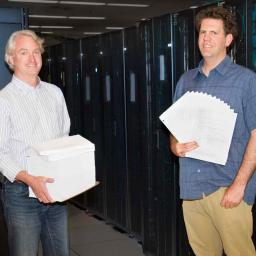 |
by staff on (#2S9GX)
“Los Alamos has lots of supercomputing power, and we do lots of simulations that are well supported here. But we’ve found that Big Data analysis projects need to use different frameworks, which often have dependencies that differ from what we have already on the supercomputer. So, we’ve developed a lightweight ‘container’ approach that lets users package their own user defined software stack in isolation from the host operating system.â€The post How Charliecloud Simplifies Big Data Supercomputing at LANL appeared first on insideHPC.
|
 |
by staff on (#2S9F1)
Today Cray announced a strategic alliance with Leidos to develop, market, and sell Multi-Level Security (MLS) solutions that include the Cray CS series of cluster supercomputers to Federal and commercial customers. "We look forward to working with Cray to evolve the capabilities and technologies necessary to offer innovative, robust MLS solutions,†said Keith Johnson, Leidos Defense & Intelligence chief technology officer. “We remain committed to delivering the best technology and efficiencies that directly support our customer’s most pressing requirements.â€The post Cray to Offer Multi-Level Security Solutions with Leidos appeared first on insideHPC.
|
 |
by Rich Brueckner on (#2S9BF)
In this video from the Dell EMC HPC Community meeting, Onur Celebioglu describes the Dell EMC HPC Innovation Lab, where his team does all of the integration testing and benchmarking for high performance computing systems. "Every HPC workload and associated data set has specific server, storage, networking and software configuration and tuning requirements to achieve optimal performance. The Dell EMC HPC Innovation Lab has been established to provide customers best practices for configuring and tuning systems and their applications for optimal performance and efficiency through blogs, whitepapers and other resources."The post Finding the Right Solutions with Dell EMC HPC Innovation Lab appeared first on insideHPC.
|
 |
by Richard Friedman on (#2S91D)
Game developers face a unique challenge – how to make their graphics-heavy applications perform well across a very wide spectrum of hardware devices, not just high-end systems. So while an early version of a game might have been developed on some high-end system with 10 teraflops of CPU potential in a discrete graphics card, how do you scale it down to smaller consumer devices where optimization options are more limited?The post Multicore Performance Challenges for Game Developers appeared first on insideHPC.
|
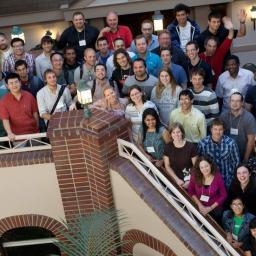 |
by staff on (#2S5YB)
Today the STEM-Trek nonprofit announced that donation from Micron Foundation will make it possible for more scholars to participate in the PEARC17 conference and student program. The Practice & Experience in Advanced Research Computing conference will be held in New Orleans, Louisiana, July 9-13, 2017.“We’re delighted to support STEM-Trek and the PEARC17 Student Program,†said Dee Mooney, Micron Foundation Executive Director. “It’s a great opportunity for students to learn in a professional engineering conference environment and engage with industry icons. As they prepare to fill the STEM pipeline, professional development and networking experiences will strengthen their success in the microelectronics industry and beyond,†she added.The post Micron Foundation Supports PEARC17 Student Program with STEM-Trek appeared first on insideHPC.
|
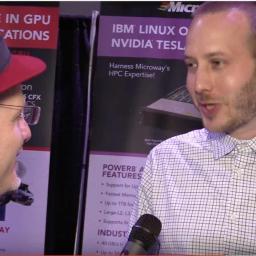 |
by Rich Brueckner on (#2S5WC)
In this video from the 2017 GPU Technology Conference, Eliot Eshelman from Microway describes the company's GPU expertise and wide range of accelerated HPC products. "Since 1982, Microway has delivered high performance computing solutions. We have in-depth experience with demanding Linux-based scientific/engineering applications. Leveraging NVIDIA's latest Tesla GPUs, our team will design a solution for your specific applications. Our experts ensure your system is delivered fully tested and ready to run!"The post Microway GPU Systems for HPC & Deep Learning at GTC 2017 appeared first on insideHPC.
|
 |
by staff on (#2S5TN)
“We are pleased to partner with Mellanox to now offer even higher performance networking as an integrated component of the HPE Synergy platform. The unmatched Ethernet switch fabric performance and latency will enable our financial, business analytics, telco, and scientific customers to improve efficiency and achieve business results faster than ever before.â€The post Mellanox Enables Composable Infrastructure on HPE Synergy Platform appeared first on insideHPC.
|
 |
by staff on (#2S5RW)
Today One Stop Systems announced that Raytheon has recognized One Stop Systems with a Premier Supplier Excellence Award for their outstanding innovation, technical achievement and customer support. "We're very honored to receive this award from Raytheon," said Steve Cooper, CEO of OSS. "We believe the relationship and working well together is a very important piece of the successes we've had, particularly as technology advances. We're very excited about this new product and we want to thank Raytheon for their support and trusting us to build the Data Storage Unit to meet all of Raytheon's and the Navy's requirements."The post One Stop Systems Receives Supplier Excellence Award from Raytheon appeared first on insideHPC.
|
 |
by Rich Brueckner on (#2S5N4)
In this video from the Dell EMC HPC Community meeting, Jay Boisseau describes the mission of the community and how Dell EMC is democratizing high performance computing. "​The Dell EMC HPC Community is a worldwide technical forum that fosters the exchange of ideas among researchers, computer scientists, technologists, and engineers and promotes the advancement of innovative, powerful HPC solutions."The post Jay Boisseau on How Dell EMC is Democratizing High Performance Computing appeared first on insideHPC.
|
 |
by staff on (#2S5DE)
When it came time to perform a substantial upgrade of the TTU IT Division’s High Performance Computing Center at Texas Tech University, the challenge was to easily manage such a large expansion, which would effectively double the center’s parallel computing capacity. Since the existing 10,000+ core system includes several equipment generations, as well as the latest technology from Intel, HPCC staff at TTU chose Intel® HPC Orchestrator for the task. In this article, Alan Sill, Senior Director of the TTU HPCC, explains why.The post Intel® Architecture Deployment at Texas Tech University Relies on Intel® HPC Orchestrator appeared first on insideHPC.
|
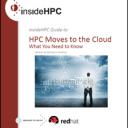 |
by MichaelS on (#2S5DG)
This is the first entry in an insideHPC series that explores the HPC transition to the cloud, and what your business needs to know about this evolution. Compiled in a complete Guide, we cover cloud computing, industry examples, IaaS components, OpenStack fundamentals, and more.The post The HPC Transition to the Cloud appeared first on insideHPC.
|